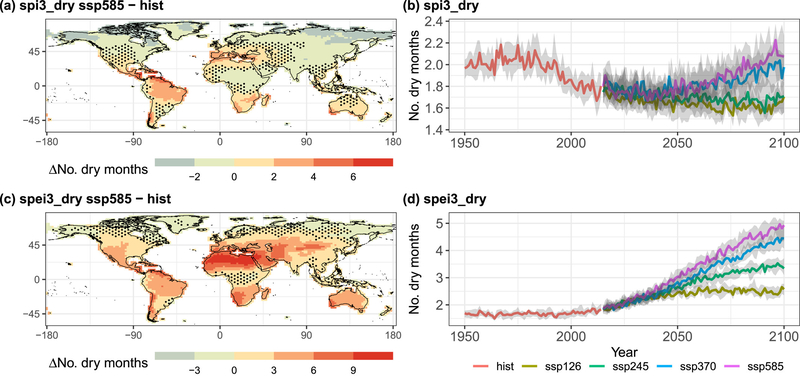The extreme weather events the world is experiencing these weeks highlight the urgency of understanding their expected future changes and mitigating dangerous global warming as much as possible.
Researchers from the Barcelona Supercomputing Center have shed some light on the occurrence of global hot and dry extreme events.
Their results show that the risk of extremely hot and dry events will increase significantly in the coming decades in many regions of the world and spotlight the importance of adopting the necessary strategies to reduce the impacts of anthropogenic climate change.
In the overall context of global extreme heat, researchers from the Barcelona Supercomputing Center-Centro Nacional de Supercomputación (BSC-CNS) contribute to shed some light on the occurrence of global hot and dry extreme events. A recent study led by BSC highlights that the risk of hot and dry extremes will significantly increase in the coming decades in many regions of the world. The results point toward the need for more urgent strategies for reducing the impacts of global warming and encourage particular attention from governments worldwide to implement suitable adaptation measures and put into practice strong mitigation policies to limit the increases of such extreme events.
The study, conducted by Paolo De Luca and Markus Donat from the Climate Variability and Change (CVC) group of the Earth Sciences Department at BSC, shows how these hot and dry extremes, as well as their co-occurrence, the so-called compound hot-dry extremes, are projected to change as a function of different emission scenarios, over global land regions. The results have been published in the journal Geophysical Research Letters.
In their research, the scientists used the latest generation of climate models and analysed four emission scenarios from 1950 to 2100 to assess how hot, dry and compound hot-dry extremes are expected to change compared to current climate conditions. The results showed that hot extremes are projected to increase over large parts of global land by the end of the 21st century under all emission scenarios, with the most significant increases projected for the highest-emission scenarios without implementing climate policies. In contrast, dry extreme changes depend more on how these extremes are defined. Nevertheless, when considering precipitation and evapotranspiration, dry extremes will still increase over large parts of the globe, especially over central and northern South America, the Mediterranean, and southern Africa. In line with the increased occurrence of hot and dry extremes, also compound hot-dry extremes are set to increase over most of the world.
Markus Donat, ICREA professor and leader of the BSC Climate Variability and Change group, stated: “This study clearly shows how threats from these hot and dry extremes intensify and become more common, calling for appropriate adaptation measures. But the results also show that the worst changes can be avoided by implementing consequent actions and policies to reduce carbon emissions from burning fossil fuels.”
“Compound hot-dry extremes with negative consequences on our lives are likely to affect us for several decades to come, and their impacts are set to worsen. Our research can provide evidence of these phenomena and their changes, but this is not enough. Mitigation efforts must be undertaken,” added Paolo De Luca, the first author of the study.
Context: Global Warming
This week, the heat is breaking records in many parts of the world. Europe, the fastest warming continent in the world, is preparing these days for some of its highest temperatures ever recorded. In California’s Death Valley, temperatures reached 53.3 ºC on Sunday, and China recorded temperatures exceeding 52 ºC. The heat is on in many places across the Northern Hemisphere. These recent extreme episodes also contributed, for example, to global average temperatures exceeding 17 ºC for the first time. Another example is the unseasonably off-the-charts hot North Atlantic these past weeks, with surface temperatures in May 1,6 ºC warmer than usual for the time of year, breaking previous records considerably.
Global warming is exacerbating the occurrence and intensity of these summer heat waves, which may also coincide with droughts within the same period. These compound events seriously threaten socio-ecological systems, causing even more significant impacts―such as forest fires, crop failures and heat-related mortality―than individual extreme events. But the effects of these compound events depend on where they occur: disparities in the incidence and severity of such events between the southern and northern hemispheres highlight the need for adaptation and mitigation strategies tailored to different parts of the world.
Reference: De Luca, P., & Donat, M. G. (2023). Projected changes in hot, dry, and compound hot-dry extremes over global land regions. Geophysical Research Letters, 50, e2022GL102493. https://doi.org/10.1029/2022GL102493.
- Caption: Extreme heatwaves and droughts are becoming more frequent as the planet continues to warm. Credit: Royal Meteorological Society (RMETS).



